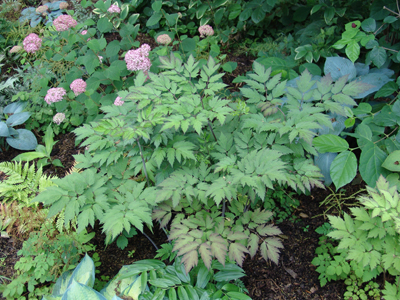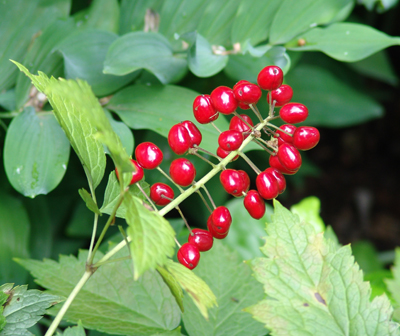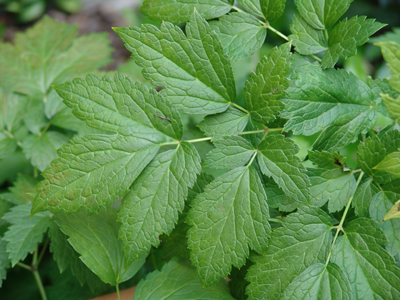
The Terry Shane garden is looking incredibly flush with foliage this time of year, with countless woodland plants striving for attention. One gorgeous species that is hard to miss is the red baneberry, Actaea rubra. A small patch of plants is holding vivid red fruits just above a backdrop of green foliage. Most people associate bright fruits with autumn, but the red and white baneberry produce fascinating berries during the summer.

The attractive fruit of Actaea rubra. photo credit: S. Keitch
Despite the fruit’s attractiveness, it is highly toxic, hence the ominous common name “baneberry.” The other moniker, “doll’s eyes,” is self-explanatory, as the berries have a black dot that resembles the iris of an eyeball. This is especially noticeable as well as creepy on the white baneberry, Actaea pachypoda.

Trifoliate foliage of Actaea rubra. photo credit: S. Keitch
The entire plant is diminutive when compared to closely related bugbane species, with the delicate racemes being held only two feet above the ground, and reaching only about two inches in length. The native bugbane species, Actaea podocarpa and Actaea racemosa, are much taller, and have much more dramatic inflorescences later in the summer.
All of the Actaea species, which now include all of the former Cimicifuga species, have gorgeous foliage. The leaves are trifoliate and deeply cut, providing texture for a woodland setting. The cultivars of the larger bugbane species also offer dark purple foliage, which is spectacular when topped with white flowers late in the season. However, the fruits of the baneberry are the topic at hand, and are well worth a trip to the Scott Arboretum. Please come and explore the Terry Shane garden and try to spot the red-hot berries of the red baneberry!
